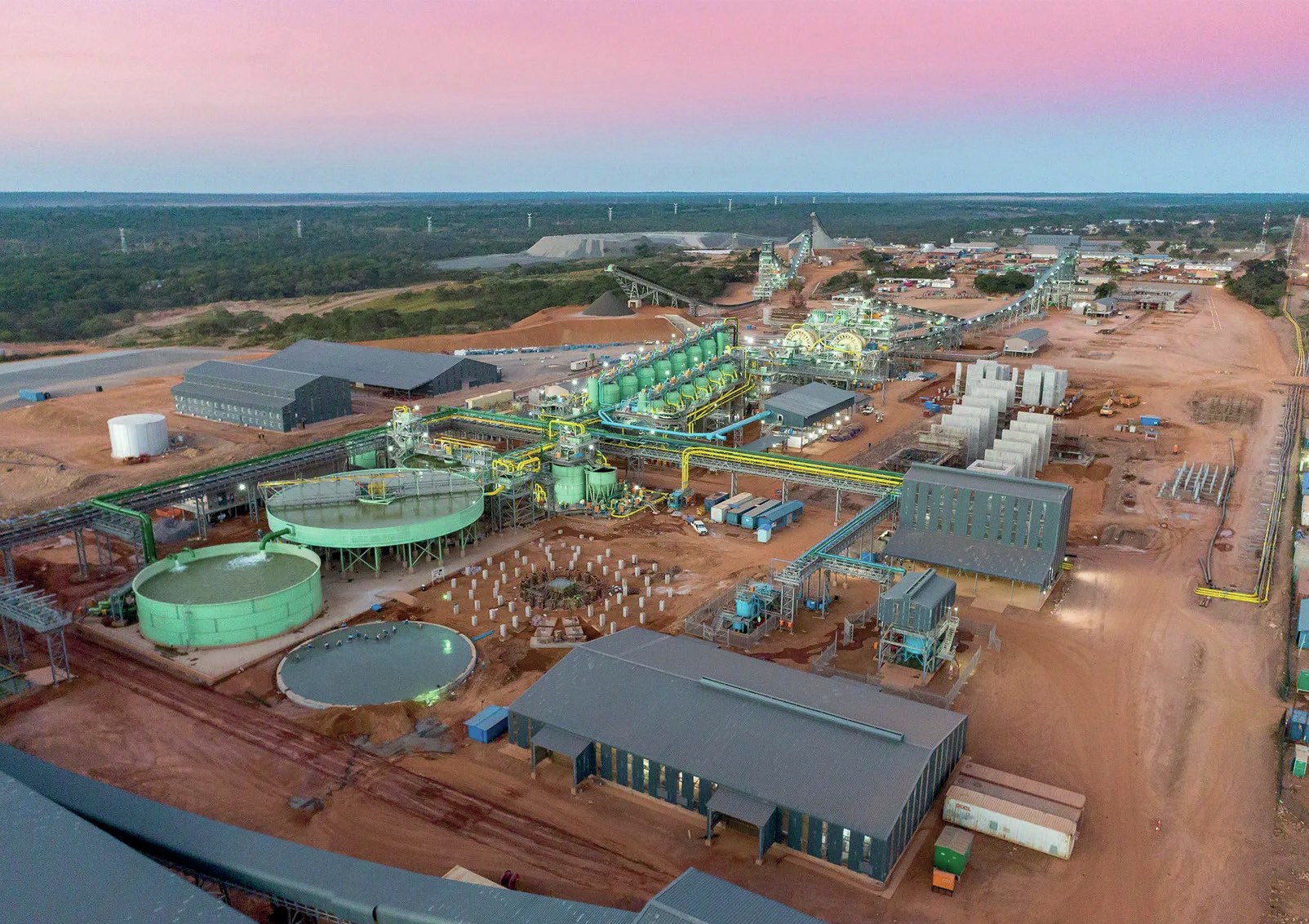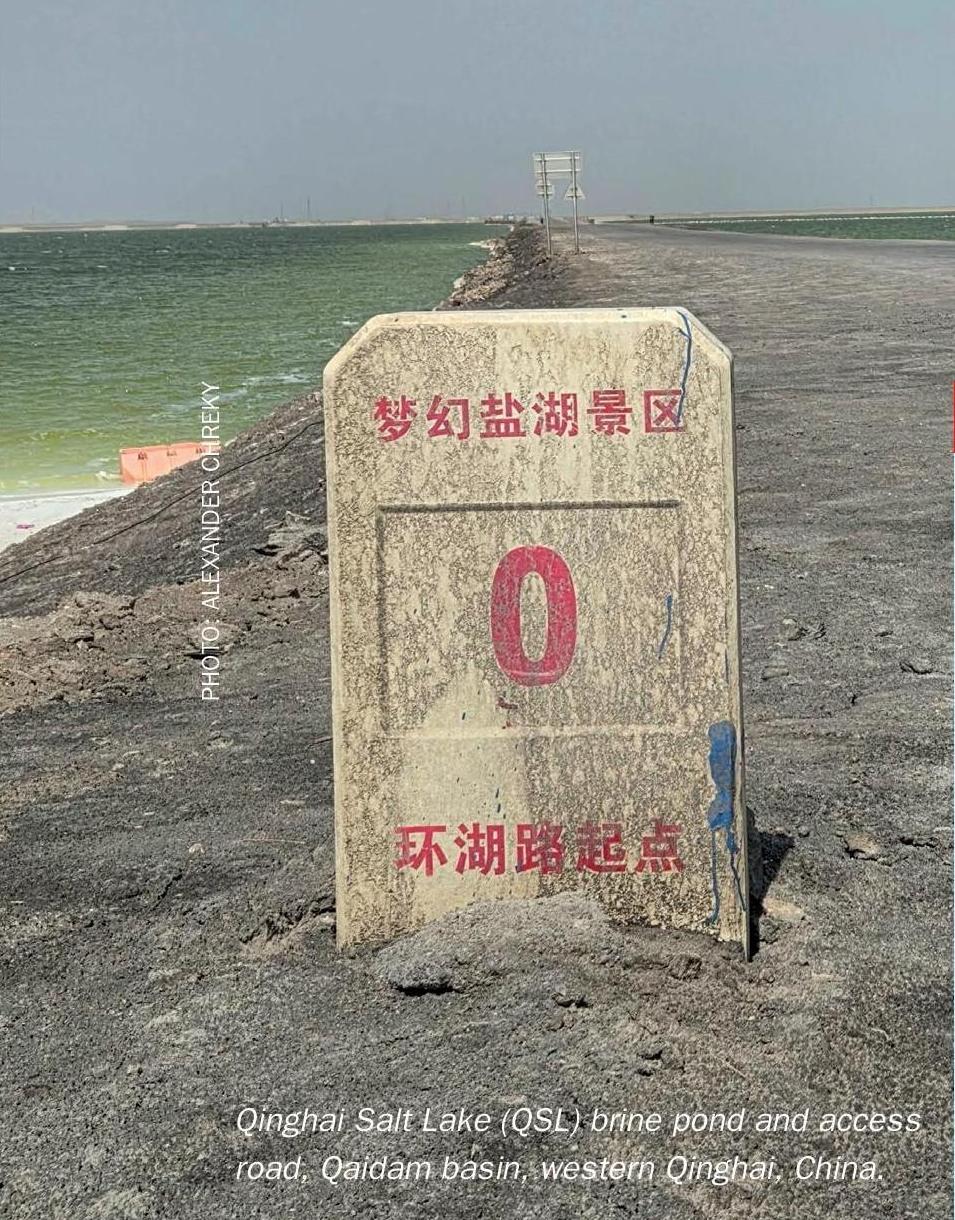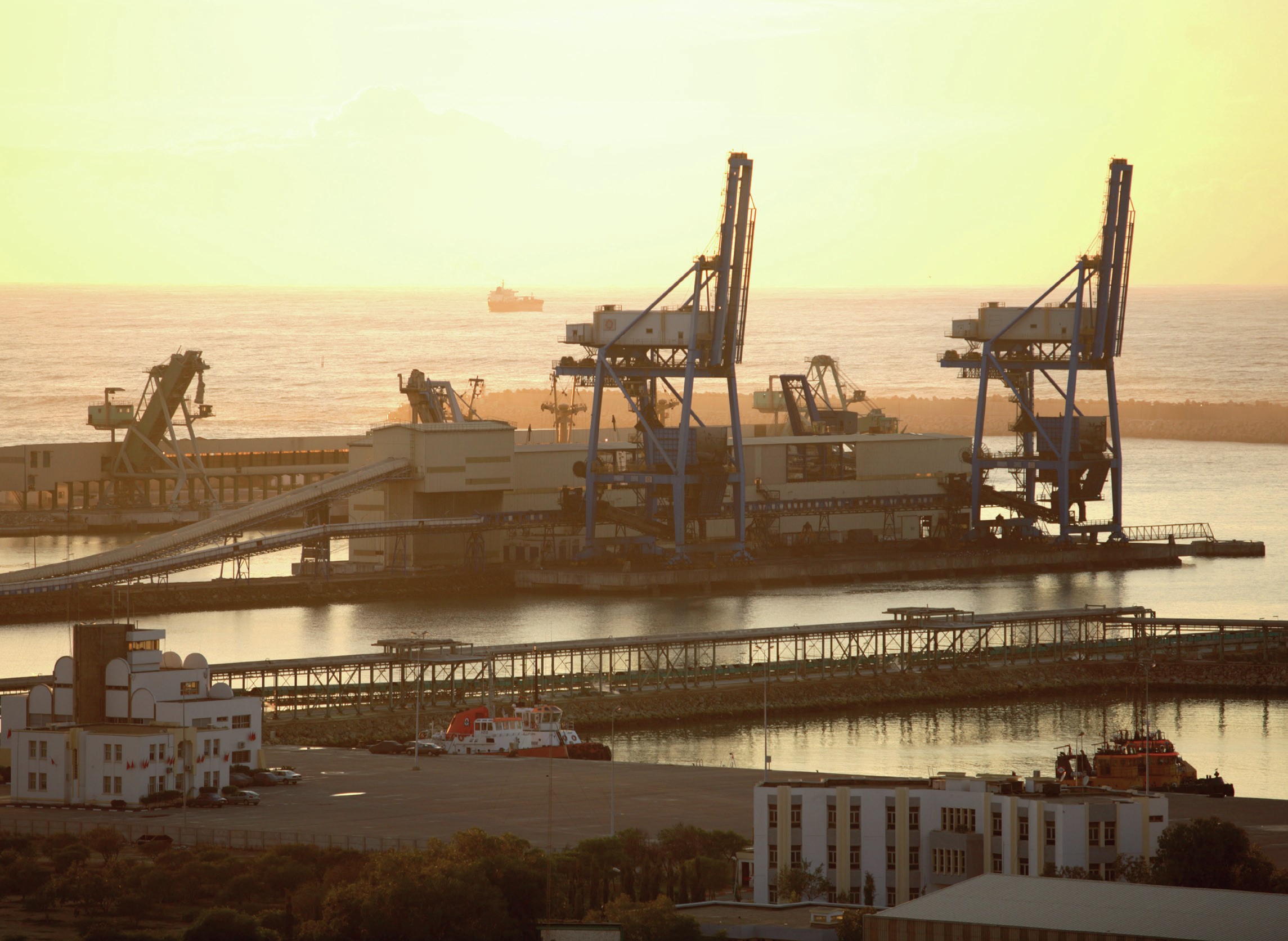Sulphur 412 May-Jun 2024
31 May 2024
Sulphuric Acid News Roundup
Sulphuric Acid News
NAMIBIA
Sinomine buys Tsumeb smelter
Dundee Precious Metals says that it has sold the Tsumeb smelter, including all associated assets and liabilities, to China’s Sinomine Resources Group for $49 million. Sinomine Resources Group is a Chinese company founded in 1999. Its main business and operations cover four segments: EV-lithium material development and utilisation, rare and light minerals (caesium and rubidium) development and application, geo-tech services and mining property development. Dundee Precious Metals will transfer all assets debt-free and cash-free, subject to normal working capital adjustments. The transaction is subject to customary closing conditions, including approval under the Namibia Competition Act and approvals required from Chinese regulatory authorities for overseas investments, and is expected to close in Q3 2024.
David Rae, Dundee Precious Metals president and CEO, said the sale of the Tsumeb smelter is consistent with the company’s strategic objective of focusing on gold mining assets and simplifying their portfolio in the future. “We are extremely proud of the investments that we have made to transform Tsumeb’s operational and environmental performance into a specialised custom smelter with a highly skilled workforce,” Rae said. He thanked Namibia’s government, the Tsumeb community and our employees for their support over the past 13 years. “We will work closely with Sinomine to ensure a smooth transition to support a successful future for the operation and its stakeholders.”
Dundee acquired the smelter in 2010 to secure a processing outlet for the complex concentrate produced by the company’s Chelopech mine in Bulgaria. With developments in the global smelting market and changes in the quality of the Chelopech concentrate, Dundee Precious Metals can place its Chelopech concentrate at several other third-party facilities, providing secure and reliable processing alternatives at favourable terms. n
UZBEKISTAN
Almalyk places new smelter order
JSC Almalyk Mining and Metallurgical company (MMC), Uzbekistan’s main copper producer, has signed an agreement with Metso for process technology deliveries for the company’s new copper smelter investment in Uzbekistan. The majority of equipment package contracts under the agreement are anticipated to be signed this year. The frame agreement is a continuation of Metso’s and Almalyk MMC’s contract signed at the end of 2022 for the design and basic engineering work for the copper smelter. The planned production capacity of the new smelter, which will be integrated with the company’s existing operations in Almalyk, is 300,000 t/a of copper cathode and 1.8 million t/a of sulphuric acid.
”We are very pleased to be selected as the strategic partner for Almalyk MMC’s smelter project,” said Piia Karhu, President of Metso’s Metals business area. “Metso will provide Almalyk MMC with the most advanced sustainable Planet Positive technology for their copper refining processes,” she added.
CHINA
Metso to supply technology for a battery-grade nickel project
Metso has been awarded an order to deliver solvent extraction technology for a nickel plant in China. The company said that the value of the order was in the range of EUR 15-20 million. Metso’s scope of delivery consists of the VSF® X solvent extraction process for the production of a battery-grade nickel sulphate solution. In addition, Metso will deliver multiple polishing filters, as well as spare parts and advisory services. Prior to this order, Metso conducted the concept study and process test for the project. Basic engineering for the project is ongoing.
SWEDEN
New duplex tube for acid environments
Alleima has introduces new advanced super-duplex tube tailored for acids. SAF™ 3006 is a high-alloy duplex stainless steel tailored to enhance corrosion resistance in acidic and caustic environments. The new alloy, an upgrade to traditional super-duplex stainless steels, adds to the company’s growing duplex portfolio. The main application is heat exchanger tubing exposed to hydrochloric, sulphuric, formic or other acids. Duplex grades, with a 50-50 austenitic-ferritic structure, offer more than twice the strength of standard stainless steels and superior corrosion resistance. The chemical composition involves a high chromium content of 30% and a molybdenum level of 3.2% to maintain good structural stability and balancing of the alloying elements.
“We’re thrilled to welcome this new super duplex to our expanding duplex family. It provides that ‘missing duplex tool’ for customers battling acids in heat exchangers, giving them that extra edge. With the addition of SAF™ 3006, we strengthen our presence in duplex materials tailored for acidic corrosion, where we see strong growth potential. Applications may include caustic evaporators, acid coolers and evaporators,” saidEduardo Perea, Market & Product Manager EMEA at Alleima Tube Division.
MOROCCO
OCP joint venture on green fertilizer production
OCP Group has signed a joint venture agreement with green energy, metals and technology company Fortescue Ltd. The 50-50 partnership aims to supply green hydrogen, ammonia, and fertilizers to Morocco, Europe, and international markets. It includes the potential development of manufacturing facilities and an R&D hub to advance the rapidly growing renewable energy industry in Morocco. Fortescue and OCP Group, leaders in iron ore and phosphate respectively, are united in their goal to reach their emissions reductions targets. They share a common vision for the pivotal role of green hydrogen and ammonia in forging a sustainable future globally.
The partners have laid out proposed plans for four cornerstone projects in Morocco: (i) large-scale integrated green ammonia and green fertilizer production capacity, including renewables, energy generation, electrolysis, ammonification and fertilizer production; (ii) manufacturing of green technology and equipment; (iii) a research and technology hub, located alongside Mohammed VI Polytechnic University (UM6P) near Marrakech, to bolster the JV, the ecosystem and other players, with research in renewable energy, green hydrogen and minerals processing; and (iv) collaboration of corporate venture capital funds to drive investment in key technology advancements.
Mostafa Terrab, Chairman and CEO of OCP Group, said: “Our strategic partnership with Fortescue is a testimony to our joint commitment to decarbonisation, driving the development of cutting-edge facilities and delivering competitive renewable energy, products and technology.”
Fortescue Energy CEO, Mark Hutchinson added: “OCP and Fortescue are fully aligned on their ambitions. We intend to create in Morocco one of the world’s leading integrated renewable energy, manufacturing, and technology enterprises, supplying not only a large and growing domestic market for green products, but also with the potential to supply other countries and continents. This is a very significant moment for Fortescue, OCP Group and Morocco as we help revolutionise the way we power our planet and diversify the world’s future energy security, while creating thousands of jobs and industries in Morocco.”
GERMANY
New scrubber pilot plant to develop gas cleaning processes
Metso has installed a fully automated multi-purpose scrubber pilot plant at its R&D centre in Frankfurt. The new plant will be used for developing and optimizing gas cleaning processes. The first focus will be on the development of simultaneous scrubbing of SO2 and NOx at low temperatures.
“This investment will put Metso at the forefront of innovation in the field of emission reduction and allow us to optimize commercial-scale gas cleaning plants. The test facility supports the increasing customer demand for solutions to remove NOx at low temperatures in the presence of SO2 . We are further strengthening these technologies that our customers find extremely valuable,” said Leif Skilling, Director, PG Gas Cleaning at Metso.
The pilot plant features modern online sensors for the measurement of an extensive set of gas and liquid properties. The process control system will allow the development of reliable process models for designing industrial-sized plants and will support further process optimization and advanced digitalisation solutions.
RUSSIA
PhosAgro acid output up 5%
In its most recent results, PhosAgro said that production of agrochemicals during 1Q 2024 increased by 6.9% year-on-year to 3.0 million tonnes. This growth was driven mainly by a 9.2% increase in the production of phosphate-based fertilizers and feed phosphates, to 2.26 million tonnes. The production of key feedstocks in 1Q 2024 rose 3.6% year-on-year, mainly due to a 5.4% increase in the production of phosphoric acid and a 4.7% increase in the production of sulphuric acid. Production of phosphoric acid, the main feedstock for making phosphate-based fertilizers, rose to nearly 900,000 tonnes due to earlier upgrades to production units and more efficient equipment utilisation. Sulphuric acid production rose to 2.175 million tonnes. This increase was due to the improved operating efficiency of the sulphuric acid production unit in Cherepovets and the commissioning of a new sulphuric acid production facility in Balakovo in late 2023.
FINLAND
Metso expands solvent extraction range
Metso has expanded its solvent extraction offering with a wider capacity range and improved features. The company is also introducing the VSF® X solvent extraction plant with extended scope. Part of Metso’s Planet Positive offering, VSF X allows copper, cobalt, nickel and manganese producers, among others, to purify desired metals from the leach solution in a safe and sustainable manner. The technology can also be used in battery black mass recycling processes.
“Solvent extraction is a crucial step in the production of essential battery metals and is gaining wider ground in hydrometallurgy applications. This is driven by the growing demand for higher purity metals and the increasing use of minerals to empower the energy transition. Our customers are seeking reliable and environmentally sound production processes with lower plant life cycle costs. Metso’s VSF® X solvent extraction technology meets these needs and enables an efficient and economical solvent extraction process step for various ore bodies and recycled battery black mass,” explains Olli Siltala, Product Manager for the VSF® X solvent extraction plants at Metso.
KAZAKHSTAN
New uranium processing prokect
Inkai, a joint venture by Kazatomprom (60%) and Canadian Cameco (40%), has announced its plan to build a uranium ore processing (‘affinage’) facility with a capacity of 4,000 t/a U3 O8 . Under the project, the construction of a new affinage facility, a power substation with a diesel generator and the reconstruction of the existing pregnant solution processing plant are expected. The project starts this year and will be completed in 2025. The company plans to build all these new facilities in parallel with uranium production and processing. Once they are ready, these facilities will be integrated into the current utility systems and the power grid.
To produce uranium at the Inkai mine, the joint venture relies on in-situ sulphuric acid leaching that involves leaving the ore where it is in the ground and recovering the minerals from it by dissolving them and pumping the pregnant solution to the surface where the minerals can be recovered. Consequently, there is little surface disturbance and no tailings or waste rock generated. However, Kazatomptom has faced production restrictions in recent months due to shortages of sulphuric acid.
CANADA
Pilot plant for production of merchant grade phosphoric acid
Fox River Resources Corporation says that it has successfully started up a pilot plant for converting phosphate concentrate to high quality merchant grade phosphoric acid (MGA) using the JESA Technologies hemi dihydrate (“HDH”) process. Efficiency (P2 O5 recovery) at the pilot unit is high and above 99%. Sulphuric acid consumption used in the phosphate acidulation process was 2.46 tonnes, basis 100% H2 SO4 per tonne of P2 O5 . This is lower than most sedimentary deposits and produces an economic advantage due to lower sulphuric acid consumption.
INDIA
Start-up for new copper smelter
Kutch Copper, a subsidiary of Adani Enterprises Ltd, says that it has commissioned the first phase of its new $1.2 billion greenfield copper refinery at Mundra in Gujarat. The first phase of the facility that will produce 500,000 t/a of refined copper has started operations and full-scale capacity of 1.0 million t/a is expected by 2029, by which time it will be the world’s largest single location custom smelter.
India’s per capita copper consumption is estimated around 0.6 kg compared to the global average of 3.2 kg. India’s drive towards clean energy systems, increasing penetration of electric vehicles and a host of associated applications are expected to double the domestic copper demand by 2030.
“With Kutch Copper commencing operations, the Adani portfolio of companies is not only entering the metals sector but also driving India’s leap towards a sustainable and aatmanirbhar (self-reliant) future,” said Gautam Adani, Chairman of the Adani Group. “Our speed of execution in this ambitious, super-sized project underscores our commitment to take India to the forefront of the global copper sector… When (fully) commissioned, our modern smelter will set new benchmarks in copper production, with an enhanced thrust on innovative green technology.”
The smelter is also expected to help offset India’s imports of sulphuric acid, which currently stand at approximately 2 million t/a. The plant will produce 1.5 million t/a of sulphuric acid, and 250,000 t/a of phosphoric acid.
INDONESIA
Antam to start building new HPAL plant next year
State-controlled mining company Aneka Tambang (Antam) says that it will launch the construction of two nickel processing facilities next year under its partnership with China’s Ningbo Contemporary Brunp Lygend Ltd (CBL) as part of Antam’s deal with CBL to develop an Indonesian production hub for electric vehicle batteries and ultimately EVs themselves. The companies are conducting feasibility studies for a rotary klin electric furnace (RKEF) plant to process nickel into crude metal and a high-pressure acid leach (HPAL) plant to extract the material used in EV batteries from nickel ores.
UNITED STATES
More efficient lithium extraction
Chemists at the US Department of Energy’s Oak Ridge National Laboratory say that they have developed a more efficient way to extract lithium from waste liquids leached from mining sites, oil fields and used batteries. They demonstrated that a common mineral can adsorb at least five times more lithium than can be collected using previously developed adsorbent materials.
“It’s a low-cost, high-lithium-uptake process,” said Parans Paranthaman, an ORNL Corporate Fellow and National Academy of Inventors Fellow. He led the proof-of-concept experiment with Jayanthi Kumar, an ORNL materials chemist with expertise in the design, synthesis and characterization of layered materials. “The key advantage is that it works in a wider pH range of 5 to 11 compared to other direct lithium extraction methods,” Paranthaman said. The acid-free extraction process takes place at 140C, compared to traditional methods that roast mined minerals at 250C with acid or 800 – 1,000 C without acid.






